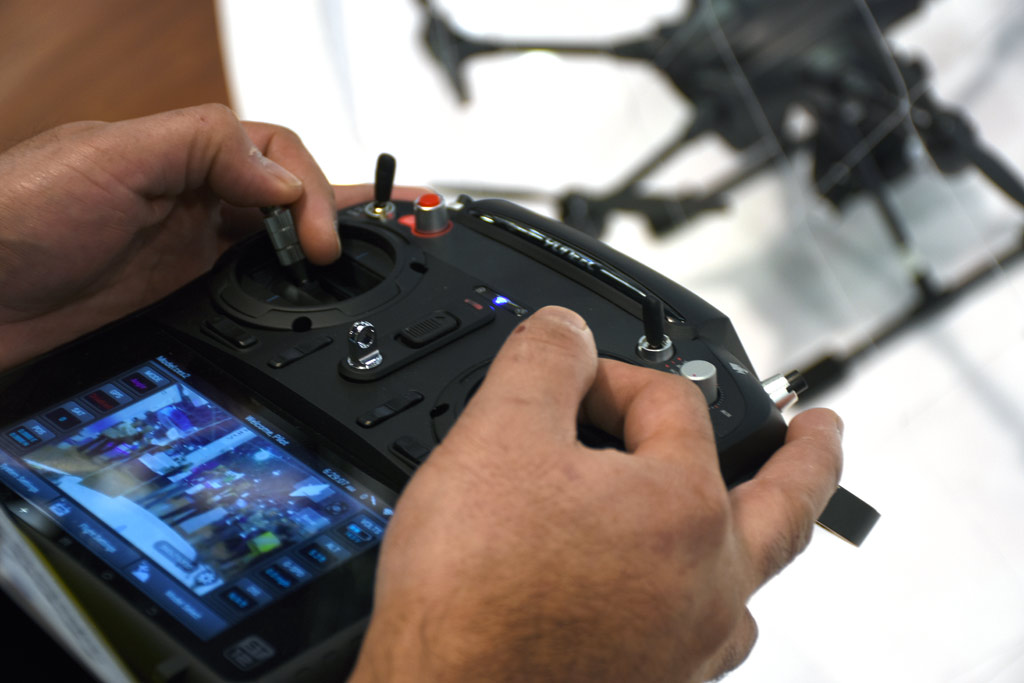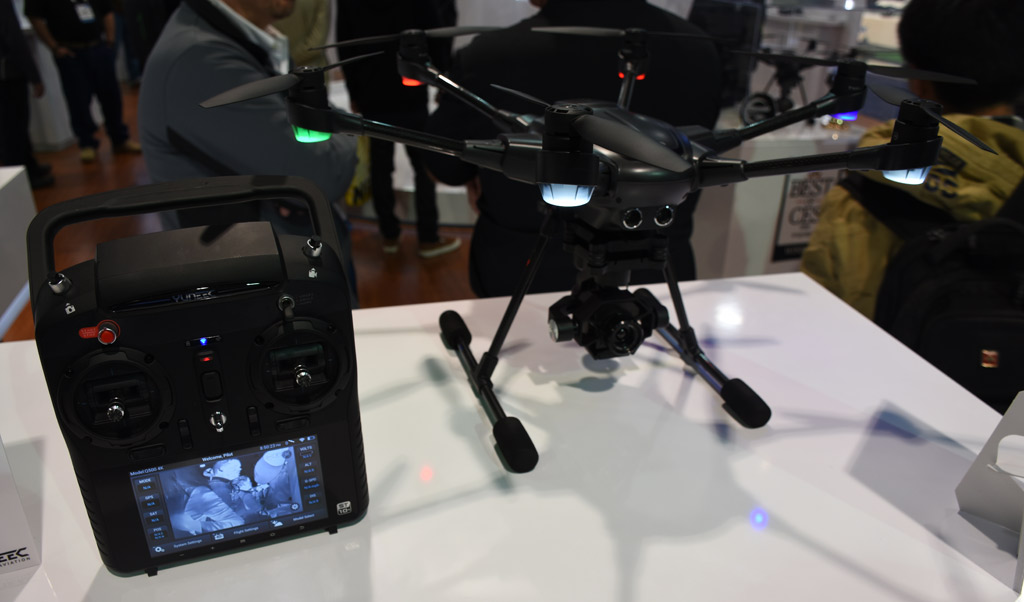
Comparing drones at CES isn’t really an easy task because they all generally do the same thing, albeit with a variety of technical differences that make them stand out from one another. Yuneec may not be a household name in this category, but with the Typhoon H, it’s taking on the best in the business in 2016.
Just looking at the Typhoon H gives the impression Yuneec is taking its prospects of upward mobility seriously. The unit is durable, has six rotors instead of four and — perhaps best of all — retractable landing gear to allow the camera gimbal to rotate a full 360-degrees without changing the drone’s orientation.
This is a significant step to getting noticed, especially when stalwarts like DJI haven’t made such a drone available to consumers yet. In cases where a drone has a fixed camera at the front (like Parrot’s, for example) or one that operates on a gimbal at a reduced panning orientation, the pilot has to rotate the drone’s body to capture a scene in any other direction. The Typhoon H isn’t limited by that at all, opening up a lot of cinematic possibilities.
Indeed, that’s part of how Yuneec is marketing this thing. The camera is no slouch, shooting 4K video and 12-megapixel still images. It’s being built with some autonomous flying features that could enable it to avoid obstacles and follow a subject on its own. These are features that need to be unlocked with firmware updates, but the sensory technology to make them work is already built into the unit.
Apparently, there will be some modularity thrown in here to make things even more interesting. Intel’s RealSense camera, demonstrated in the video in this post, would combine some of the features together so that the drone would not only follow someone, but also avoid obstacles in the process.
Why six rotors, instead of four? This won’t make the Typhoon H any faster, but will make it easier to stabilize. That bodes well for capturing good content in windier conditions. The optical image stabilization in the camera gets an assist here that should lead to more consistent results. Additionally, the extra rotors come in handy in instances where one is damaged or stops working for whatever reason. Without testing it out, I can’t verify any of these claims, but the demos at the show certainly gave a strong indication.
Battery life is being rated at 25 minutes, which is really hit or miss, depending on what the drone is doing. The good news is that some energy is saved by reducing the need to tilt or rotate the body to change the camera’s orientation.
The Android-based controller is also worth mentioning. With a built-in 7-inch display to visualize what the drone is looking at, it negates the need to use a smartphone or tablet to fly it. The connectivity range is going to be limited by what’s applicable under the law, though needless to say, the Typhoon H will be able to go high and far enough to really get the most of its camera’s abilities.





